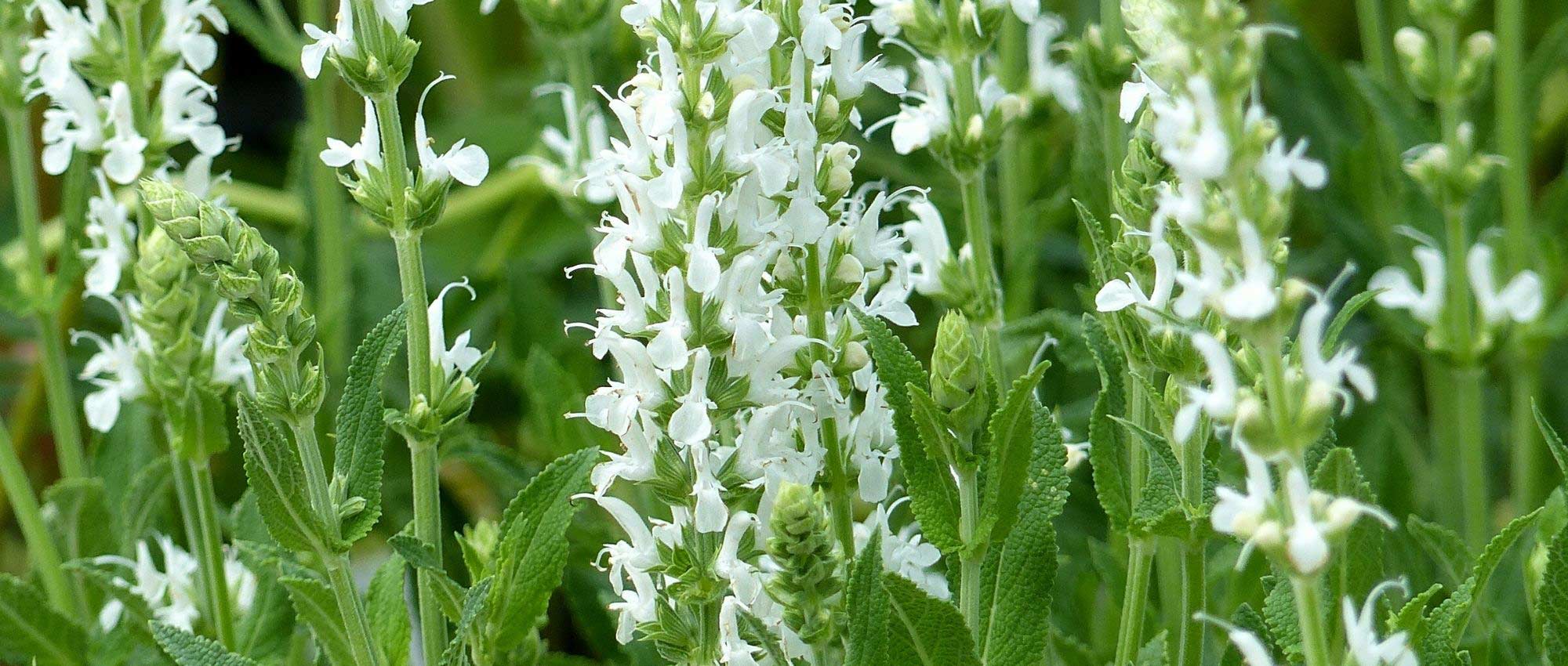
Perennials with white flowers: the best varieties
Discover our selection!
Contents
White-flowering perennials bring brightness to borders. They help tone down overly vivid flowering displays or create contrast, for example with darker flowers or purple foliage. They feature in the composition of clean, modern and graphic gardens, alongside plants such as bamboos, horsetails, ferns, bushes pruned into topiary… Their very simple, natural style is also much appreciated! White-flowering perennials generally pair very well with roses, and are easy to combine with other flowering plants in soft hues: foxgloves, hardy geraniums, campanulas, delphiniums…
There is a multitude of white-flowering perennials: here we present those that offer the most beautiful and generous flowering displays. For more choice, don’t hesitate to consult our full range of white-flowering perennials !
Find Gwenaëlle’s tips to design a white garden.
Gaura lindheimeri 'Snowbird'
Like all Gauras, variety ‘Snowbird’ is a very easy-to-grow, undemanding perennial! It flowers from June until the first frosts, producing an abundant, very light and airy white flowering. The shape of the flowers, made up of four petals, evokes butterflies that seem suspended on the stems. Many Gaura varieties have more or less pink flowers, but this one offers a pure white shade! Gaura ‘Snowbird’ is a trouble-free plant that thrives easily, even in poor, infertile and dry soils. Plant in well-drained soil, as the only thing it dislikes is waterlogging. Feel free to add gravel or coarse sand when planting.
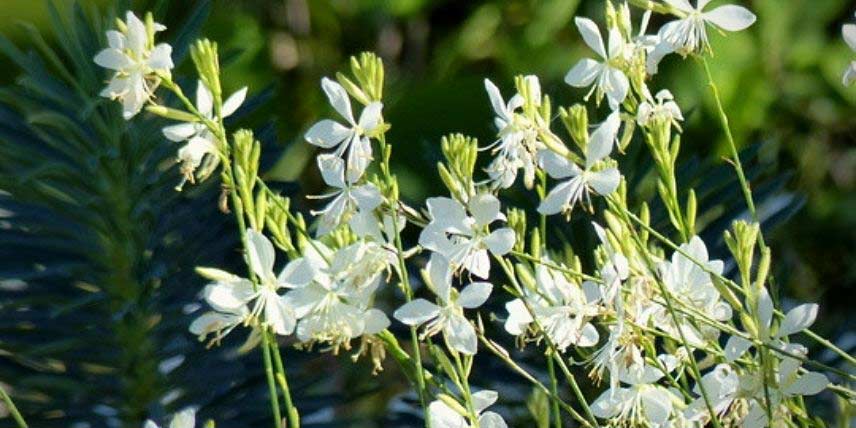
Read also
Hardy geraniums: the best 10 whitesGeranium sanguineum 'Album'
Geranium sanguineum ‘Album’ is one of the best white-flowering geraniums! It offers a flowering that is both single and elegant. Tolerant regarding soil type, it is easy to grow. It tolerates poor, stony soils and copes quite well with drought. It prefers sunny positions but also tolerates partial shade. Its flowers are cup-shaped, composed of five petals, and measure 4 cm in diameter. It forms a relatively rounded clump, reaching up to 25–30 cm in height, and spreads gradually to form a lovely groundcover. Its dark green foliage is finely divided and has the advantage of being dense, which limits growth of adventive plants. Its leaves take on a reddish hue in autumn before disappearing. We recommend planting it on the edge of a border, in front of taller perennials.
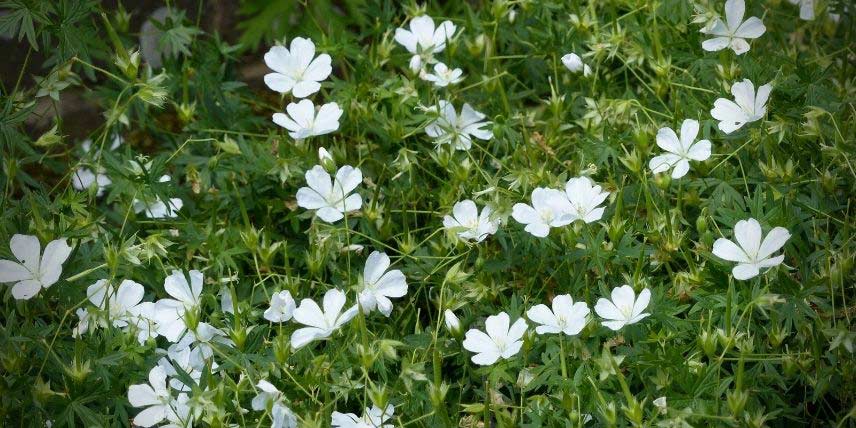
Discover other White garden inspiration
View all →Available in 0 sizes
Available in 1 sizes
Available in 1 sizes
Available in 1 sizes
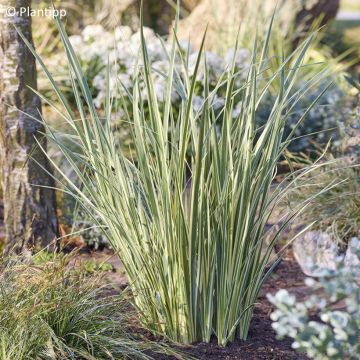
Available in 1 sizes
Available in 1 sizes
Available in 1 sizes
Available in 1 sizes
Available in 2 sizes
Available in 1 sizes
Gypsophila paniculata
Gypsophila offers an incomparable airy flowering, evoking a cloud of flowers !
It consists of numerous small white flowers that seem suspended, borne on very fine ramified stems reaching up to 1 m high. It flowers in summer, from June to August or September. It prefers well-drained soil; if planted in heavy soil, Gypsophila may die during winter, as it will not tolerate stagnant moisture. You can nevertheless grow it as an annual, but the best solution is obviously to improve drainage, for example by planting it on a mound (so water does not stagnate) and adding coarse sand or gravel at planting. You can also plant it in a rock garden. In any case, plant it in full sun, which will guarantee abundant flowering. Gypsophila flowers are superb for arranging bouquets alongside more imposing flowers (roses, lilies…).
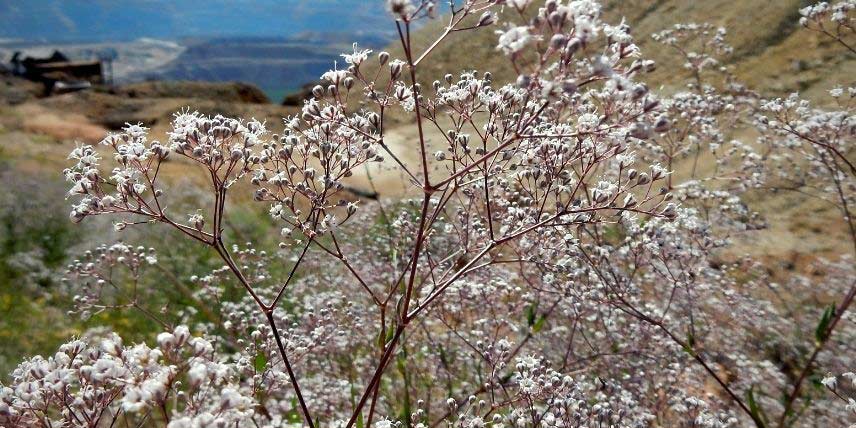
Japanese anemone 'Honorine Jobert'
Japanese anemone ‘Honorine Jobert’ is an elegant perennial that flowers late, from August to October. It produces superb white flowers about 7 cm in diameter, accented at centre by yellow stamens. Its flowering combines simplicity, with a very natural style, and elegance. It also has nicely dissected, dark green foliage. It is a vigorous and fairly tall plant, reaching 1.2 m in height, sometimes more. It easily finds a place in the garden! It prefers partial shade and does not like calcareous soils. You can plant it at the back of a perennial border, alongside ferns, hostas, astrances… When happy in the garden, it naturally tends to spread.
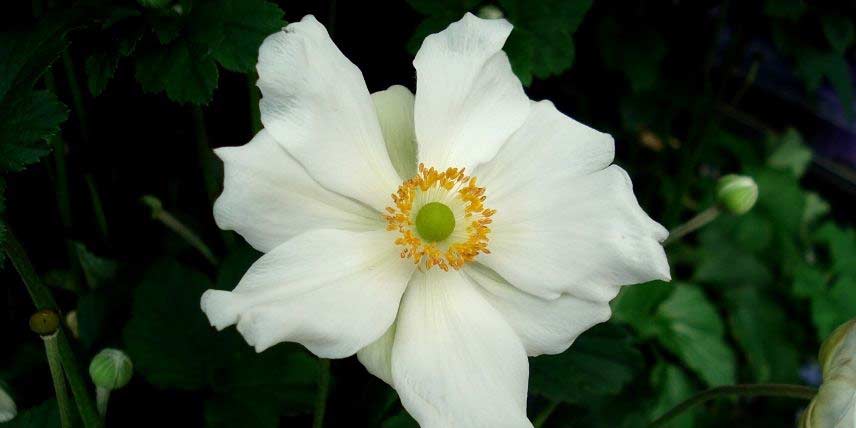
Iberis sempervirens 'Snowflake'
Also called Thlaspi or Corbeille d’argent, Iberis sempervirens ‘Snowflake’ is a small mat-forming perennial, reaching no more than 15 cm in height. This Iberis literally becomes covered in flowers in spring, for at least 3 weeks. It has evergreen foliage (which gives it its species name: sempervirens, Latin for ‘always green’).
Plant it in full sun in well-draining soil, as it does not tolerate excess moisture. Feel free to plant it in a rock garden or on a low wall. Easy to grow, it adapts well to arid, poor and challenging soils. It is hardy and tolerates drought.
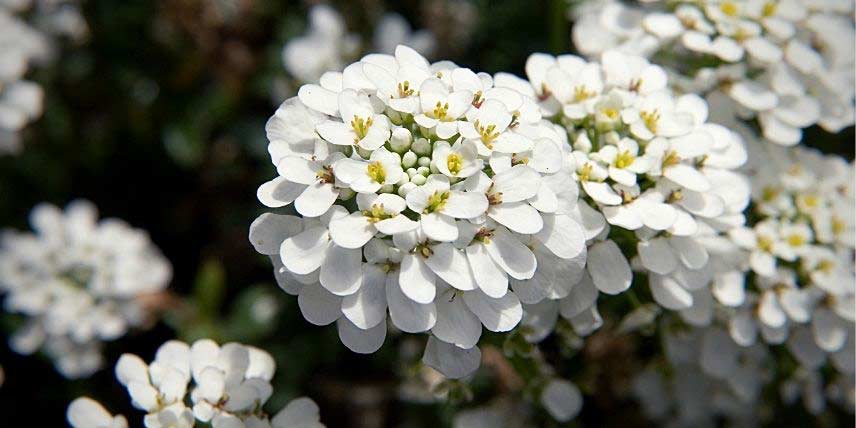
Epilobium angustifolium 'Album'
Epilobium angustifolium ‘Album’ is a large perennial, reaching up to 1.50 m in height. It forms tall upright stems that bear long clusters of white flowers at their tips, each made up of four petals. It flowers from June–July until September. Its height makes it suitable for planting at the back of a border, behind smaller perennials. This willowherb is appreciated for its very natural, elegant habit! Plant in full sun or partial shade in cool, fertile soil. It requires almost no maintenance and can self-seed.
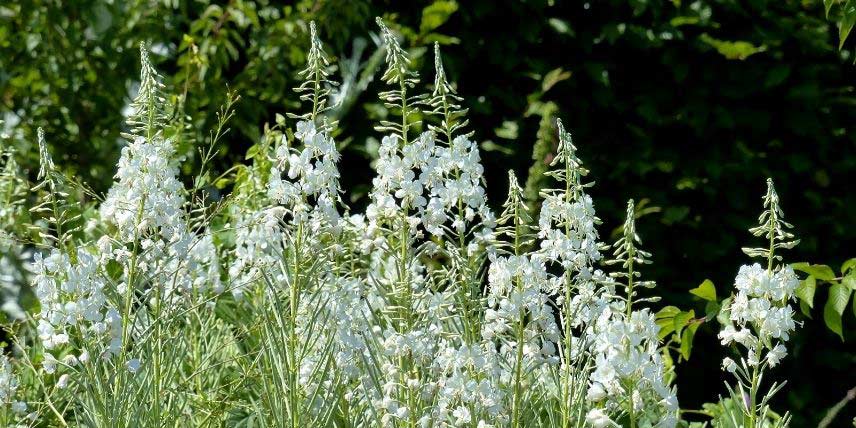
Achillea ptarmica 'Perry's White'
‘Perry’s White’ is an unusual double-flowered Achillea! It flowers from mid-June to September. Flowers resemble small pom-poms, giving a very soft appearance. Stems reach 60 cm in height; it is running and tends to spread gradually. It has narrow, elongated leaves whose dark green shade sets off the pure white of the flowers. To thrive in your garden, plant in sun, in fertile, cool, well-drained soil. It needs cooler soil than other achilleas.
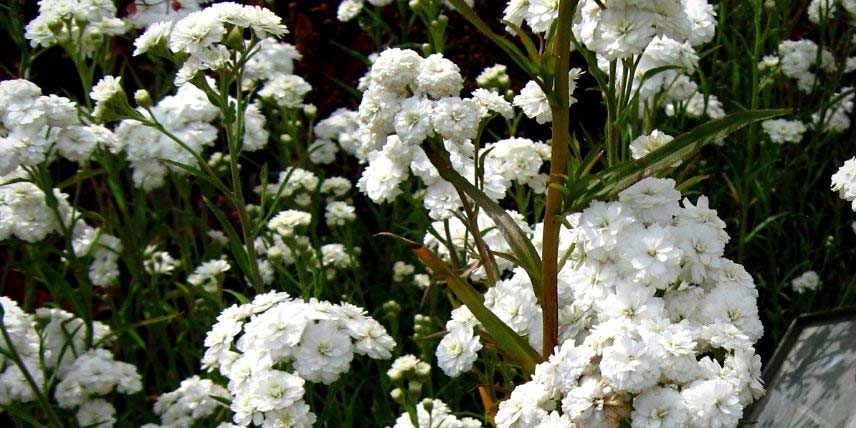
Salvia nemorosa 'Schneehügel'
Wood sage ‘Schneehügel’ is a perennial flowering from June to August or September. It bears compound spikes of small white flowers at the top of its stems. These are melliferous, attracting bees and butterflies. It forms a dense, relatively compact clump, not exceeding 50 cm in height, and has aromatic, semi-evergreen foliage. Easy to grow, it is a hardy plant that will thrive in ordinary but well-drained soil, as it dislikes excess moisture. It prefers calcareous soils. Ideal for dressing the base of roses or accompanying other perennials with white, mauve or blue flowers.
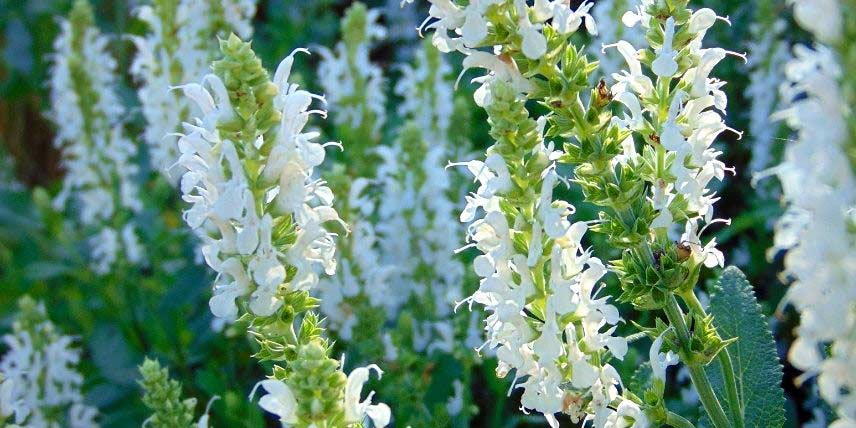
Cerastium tomentosum 'Yo Yo'
Cerastium tomentosum ‘Yo Yo’ is a mat-forming perennial groundcover that reaches no more than 15 cm in height. It produces abundant flowering from May to July, bearing pretty small compound flowers of five notched petals. It also bears pretty small silvery-grey, downy, evergreen leaves. Plant spreads rapidly thanks to its rootstocks. Thrives in full sun and dislikes stagnant moisture. Therefore particularly suited to poor, dry soils and ideal for rockeries or on low walls. Can be paired with other dry-site plants: lavender, cistus, helianthemums…
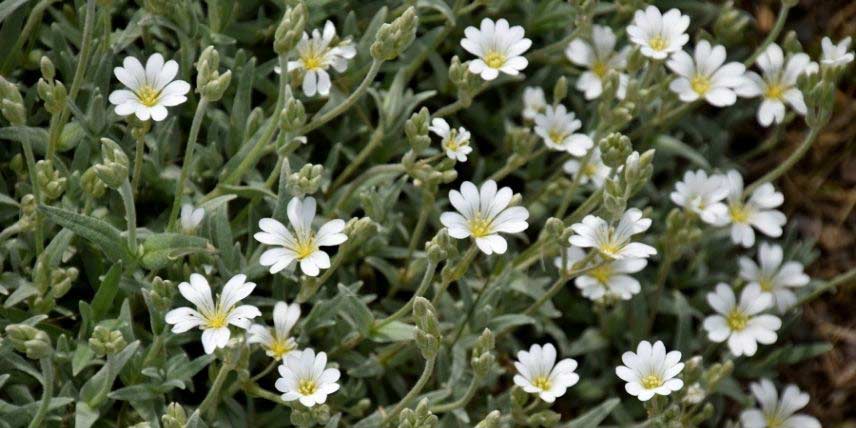
Phlox paniculata 'Fujiyama'
Phlox paniculata ‘Fujiyama’ bears beautiful panicles of white flowers from July to September. These panicles are borne at the top of its upright stems, which reach up to 90 cm high, and consist of pure white flowers, long-tubular and opening into five relatively broad lobes. They are also pleasantly scented. Leaves are lanceolate, regularly arranged along the stems and deciduous. A superb perennial for a white garden, suited to formal or romantic styles. It pairs beautifully with roses, hardy geraniums, ornamental salvias… It thrives in sun, in rich, moist, well-drained soil, and also tolerates light shade.
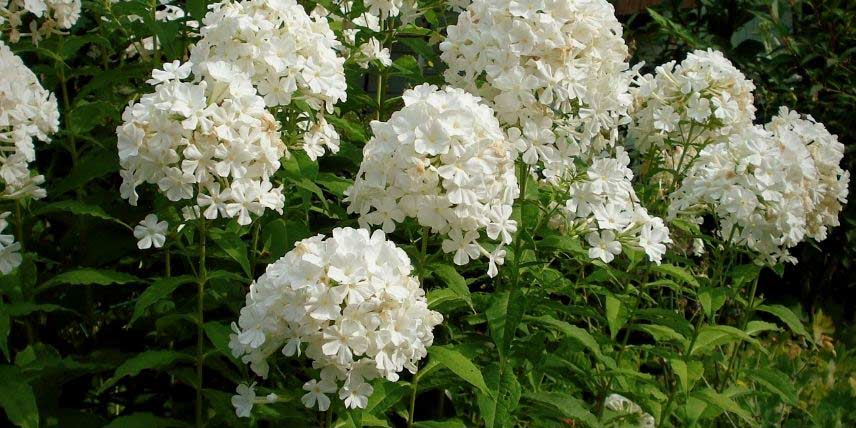
Eremurus himalaicus
Eremurus himalaicus offers spectacular flowering! It flowers from May to June, bearing erect stems topped with long white inflorescences reaching up to 2 metres high! They are made up of a multitude of small star-shaped flowers, 2 to 3 cm in diameter and bearing long stamens. The flowers open progressively, from the base to the tip, which allows flowering to be enjoyed for several weeks. Eremurus himalaicus develops from a surprising tuberous stump, with a bud in the centre and fleshy roots all around, in the form of tentacles. Its leaves are long and narrow, deciduous. To thrive, Eremurus needs a sunny position and well-drained soil. It does not tolerate stagnant moisture, which could cause the stump to rot; improving drainage is therefore essential. It also likes rich, fertile soils.
Our advice sheet “Eremurus: planting and care”
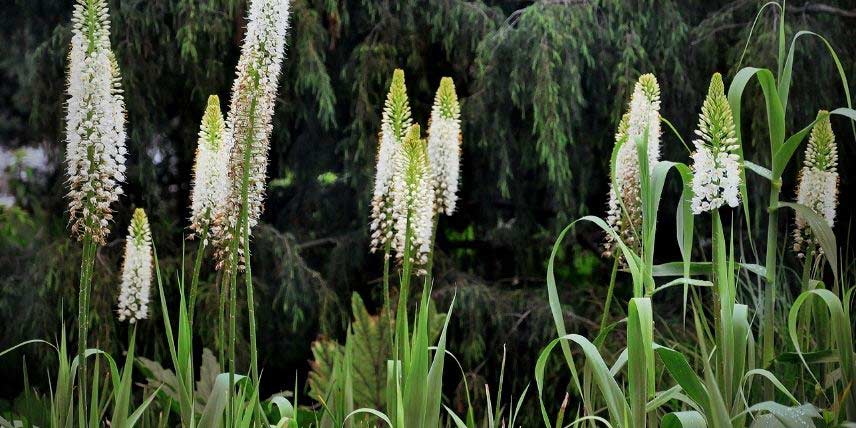
Campanula lactiflora 'Alba'
Campanula lactiflora ‘Alba’ is a superb campanula whose erect stems reach up to one metre tall. It flowers generously from June to October, producing beautiful panicles of bell-shaped flowers. It is fairly easy to grow and grows quickly. Staking stems is sometimes necessary because wind can lay them down, especially when the plant is in flower. You can also pinch the stems to make it more compact and more wind-resistant. It thrives in partial shade, in fertile, well-drained soil that stays moist in summer. It also tolerates full sun and can adapt to different soil types, provided they are not too dry.
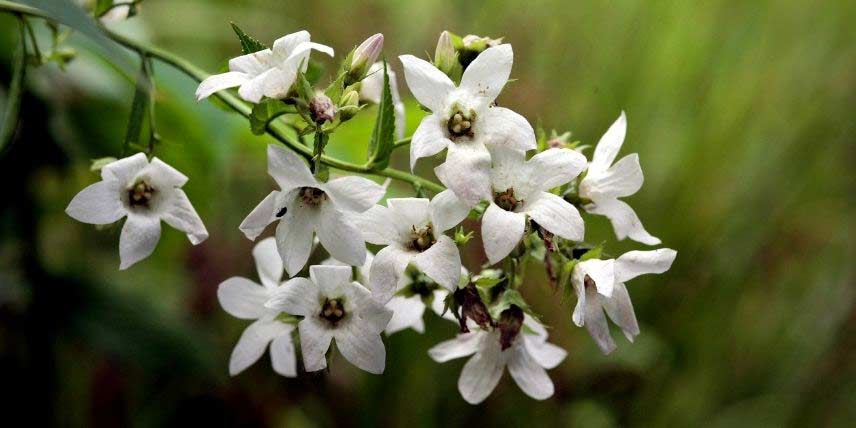
- Subscribe!
- Contents
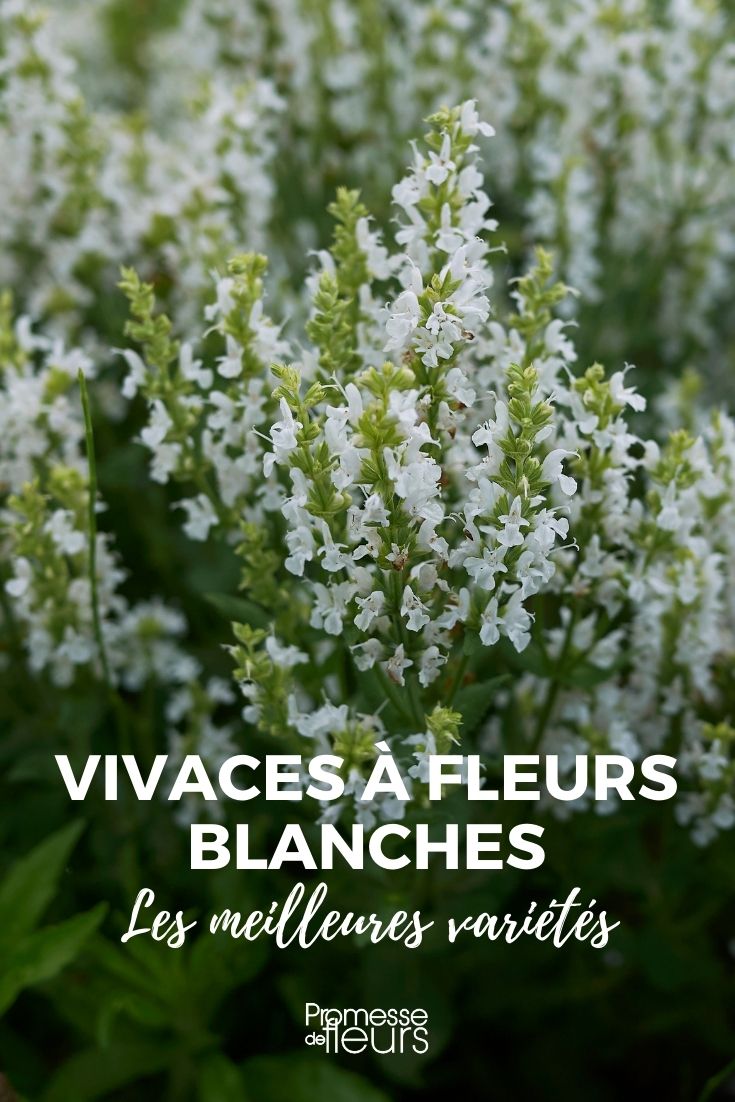



































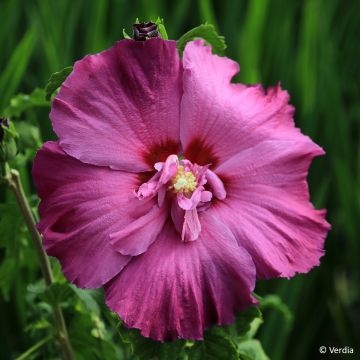
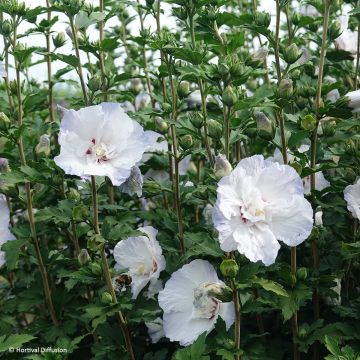


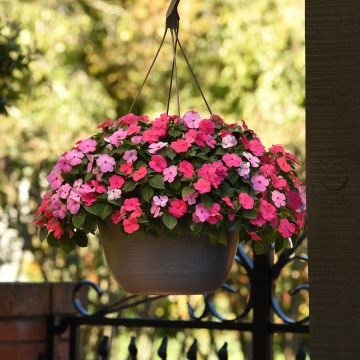
Comments